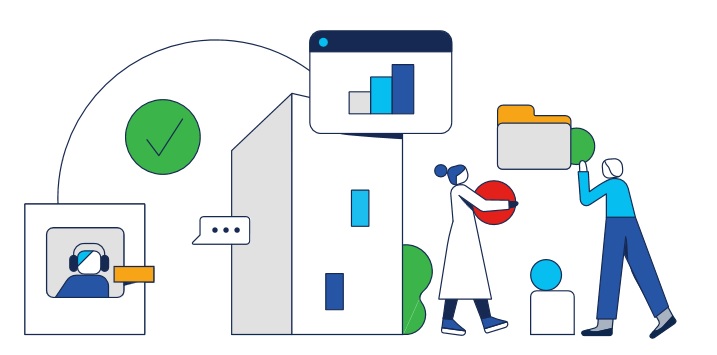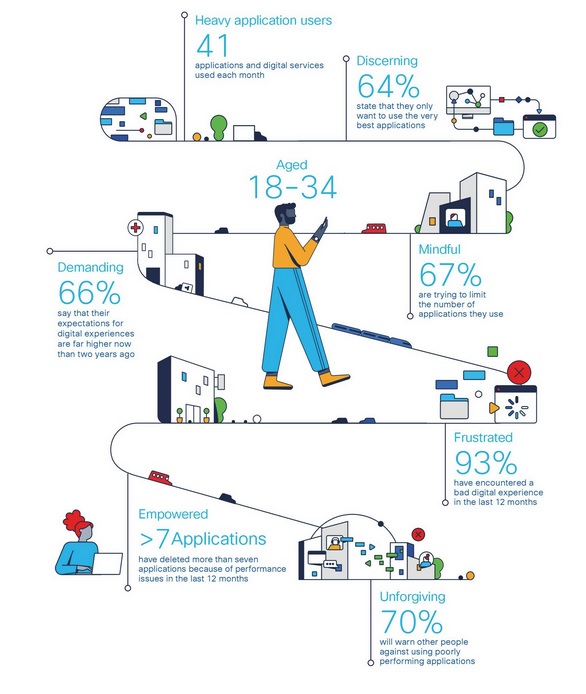
Consumer expectations for digital experience are escalating, putting increased pressure on brand owners to optimize application performance and security, according to the Cisco App Attention Index.
The global study, which examined the digital behaviors of more than 15,000 global consumers, also revealed the emergence of a new breed of application user that is more empowered, sophisticated, and demanding in its use of digital services.

Source: Cisco
Consumer Expectations Continue to Soar - but Remain Unmet
While the use of digital services and applications reached new heights during the pandemic, consumer demand for applications has only continued to increase. As consumers enjoy ever more intuitive and personalized digital experiences, their demands on applications have reached an all-time high, with 62% reporting that their expectations for digital experiences are far higher now than they were two years ago (the height of the pandemic), while 66% state they now expect brands to deliver an exceptional digital experience as standard.
But consumer needs are not being met, with as many as 88% of respondents experiencing performance issues when using applications over the past 12 months (up from 83% in 2021). Today's application users have zero tolerance for poor digital performance and when things don't work as they should, their reactions have become extreme.
■ 55% indicate they feel disrespected by brands whose applications don't meet their expectations.
■ 64% are less forgiving of brands when problems occur.
■ 77% have stopped using or deleted applications because of performance issues over the last 12 months.
Consumers are also becoming increasingly selective about the applications they use, and more conscious about the time they spend engaging with digital services — thinking harder before installing new applications, evaluating current providers, and ridding themselves of a sense of "application clutter" by culling applications that fail to meet the grade.
■ 68% are keen to get rid of application clutter (applications they don't use enough or value anymore).
■ 62% are looking to control or limit the number of applications they are using or that they have on their device.
■ 54% have deleted more applications than they have installed over the last 12 months.
The Rise of The Application Generation
These shifts in behavior and attitudes towards application experience are even more prevalent in a new cohort of application users: "The Application Generation." Aged 18-34, this group has relied on applications like no generation before, having used them to navigate the pandemic and today, to live and thrive in a hybrid world.
In addition to being heavier users of applications across every area of their lives (on average consumers under 35 years of age use 41 different applications each month, compared to 30 among people aged 35 and above), The Application Generation are far more discerning about the quality of the applications they use, with 77% claiming to be more mindful about the applications they install on their devices and 64% stating that they only want to use the very best applications and digital services. They are constantly evaluating the relevance and value — or otherwise — of the brands they engage with and the digital services they provide.
This unique group report being tired of poorly performing applications and frustrating digital experiences. A worrying trend for application owners, The Application Generation are voting with their thumbs — ditching applications that let them down and walking away from brands that don't meet their digital experience expectations. What's more, they are not shy about sharing their frustrations. 70% are more likely to tell others or warn people off applications that don't perform than they were 12 months ago.
Key Characteristics of The Application Generation

